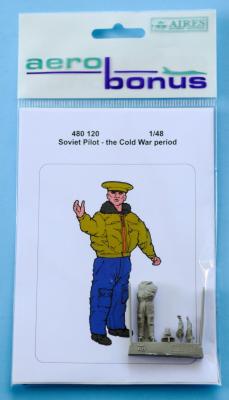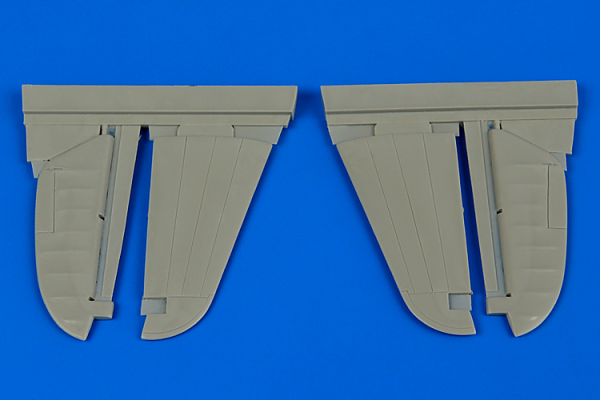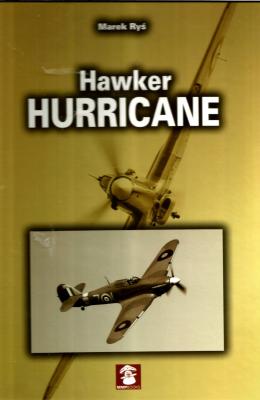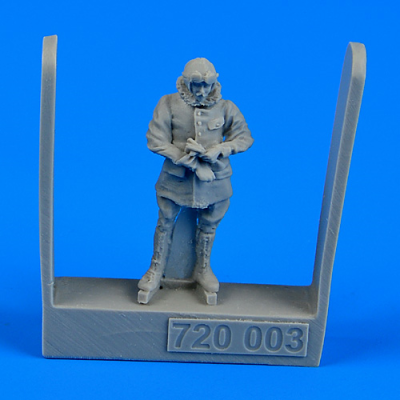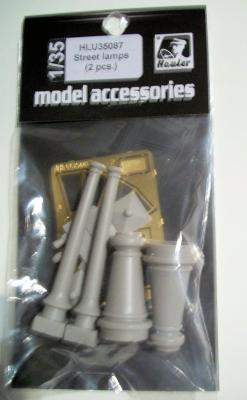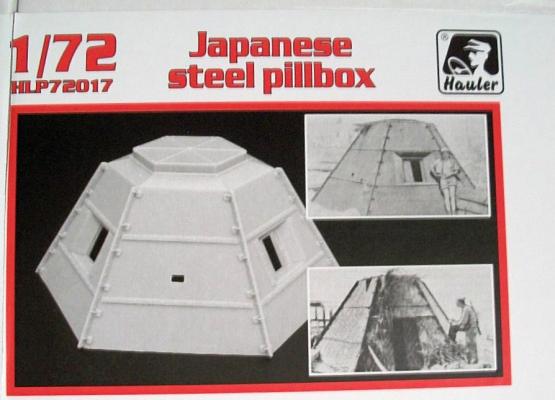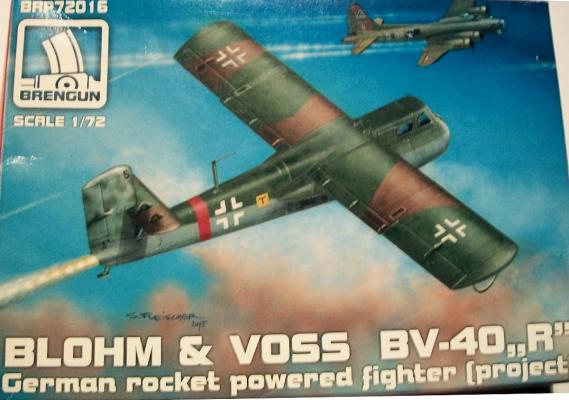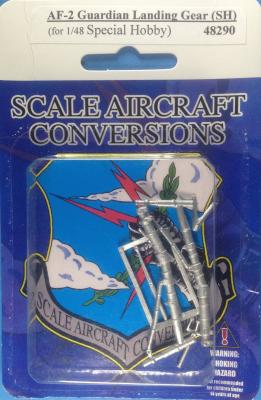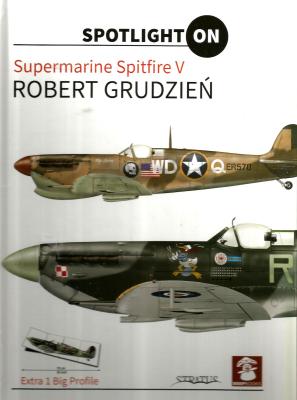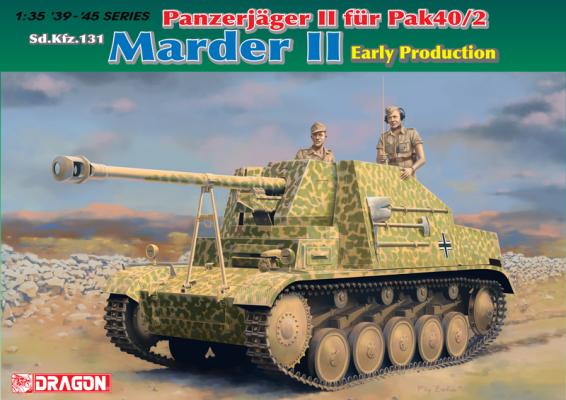A perfect addition to your diorama or display base is this Aires Aerobonus figure. This Soviet Pilot figure is designed to be used with any Cold War aircraft (La-9, La-11, La-15, La-250, Yak-15, Yak-23, MiG-9, MiG-15, MiG-17, MiG-19, MiG-21, Su-7, Su-9, Su-11, Su-13, etc.). Aires Aerobonus provides you with a resin figure with separate arms and head on one pour stub with side bars to protect the figure. Of note is the re-sealable packaging that Quickboost uses that makes the parts easy to review and then stuff back into the package securely. The supplied instructions provide color drawings for painting.
What's New
Aires is known as the producer of excellent after-market and detail items, and this product lives up to that standard. Designed for use on the Hasegawa P-40M/N this product provides for both of the horizontal stabilizers and control surfaces. There are four parts in all, cast in a durable resin material.
Looking at the accompanying images, note that the image labeled, ” 2 Parts 1” shows the parts after having been removed from the package. One will notice some “flash” between the parts and the part carrier. Not to worry, that flash is easily removed with a sharp blade or a pair of cutters. All four parts were removed and cleaned up in under 5 minutes without the use of sandpaper. Study the image labeled, “3 Aires Parts Removed from carrier” to see one set of parts after having been cleaned up.
Authored by Marek Rys and illustrated by Thierry Vallet, this book, in the “Yellow” series is a comprehensive text and photographic/image guide to the Hawker Hurricane. The publication is a a revised and expanded edition of the book, “Hawker Hurricane”, (ISBN # 8389450321)
The book thoroughly covers the development and technical aspects of the Hurricane, one of the most well-known of the British fighters of World War II. This story is told in excellent text accompanied by period B&W photographs, excellent color images of surviving airframes, extracts from official manuals and a superb collection of 1/72nd scale plans of all versions of the Hurricane from the Mk.1 of 1936 to the Mk. IV of 1943.
A perfect addition to your diorama or display base is this Aires Aerobonus figure. This German or Austro-Hungarian Pilot figure is designed to be used with any German or Austro-Hungarian WWI aircraft (Albatros D.III / D.V, Berg D.I / D.II, Fokker E.III / E.IV, E.V, D.VII, Oeffag D.III, Pfalz D.III, D.XII, Phonix D.I / D.II / D.III, Siemens-Schuckert D.III / D.IV, etc.) Aires Aerobonus provides you with a resin figure with side bars to protect the figure. Of note is the re-sealable packaging that Quickboost uses that makes the parts easy to review and then stuff back into the package securely. The supplied instructions provide color drawings for painting.
This Hauler set allows you to make two nice 1930’s European style Street lamps.
In the box is:
- 3 x Resin groups of parts
- 1 x Photo Etch sheet
- 1 x Film sheet
- 1x Instruction sheet
The parts are all is very crisp and well molded with great detail.
Construction
The build starts by removing the excess resin from all the resin parts using a razor saw.
The next stage is the main body of the street lamp. Then the Photo Etch lamp top which is a little tricky and need to be annealed before bending to shape.
Summary
These would be an excellent little addition to any diorama.
Thanks go to Hauler for providing this kit to review and IPMS USA for allowing me to review it for them.
Hauler has produced a nice World War Two Japanese Pre-fabricated Steel Pillbox. These were mainly used on Betio Island in the Tarawa Atoll. They had two internal levels, the upper was an observation area where the top opened to give a higher view. The lower area had to machine gun ports, a small arms port and a door. This is a very nice resin set.
In the box is:
- 1 x Resin Pillbox
- 1 x Photo Etch sheet
- 1x Instruction sheet
The Pillbox is very crisp and well molded with great detail.
Construction
The build starts by removing the excess resin form the lower part of the pillbox using a razor saw. The next stage is the Photo Etch gun port shutters. The one thing missing from the kit was the door which these Pillboxes did have; I will make one myself to add later.
Brengun has produced a very nice proposed German Aircraft design by Blohm & Voss based on the all wooden construction of the BV-40 Glider of which several prototypes were flown in 1944. The detail and high quality of this product is very good and the sprue also includes the Glider fuselage.
In the box is:
- 1 x light brown Sprue
- 1 x clear Sprue
- 1 x Photo Etch sheet
- 2 x Resin Rockets and launch rack
- 1 x Decal sheet
- 1x Instruction sheet
All the sprues are well molded with no flash at all.
The detail is very fine and crisp for such a small aircraft.
Construction
The build start with the cockpit which is nice for the scale, the pilot flew this aircraft in the prong position. Next the fuselage is joined, there was a little filling required to get a good fit.
Many thanks to Mr. Ross MacMillan of Scale Aircraft Conversions and the IPMS Reviewer Corps for allowing me to try this neat substitute and replacement set for the Special Hobby AF-2 Guardian. I am pleased to report on another sweet add-on and upgrade. The Guardian has a somewhat spindly appearance and having skinny but strong metal “legs” really helps!
The white-metal parts arrived in a blister pack, backed by the distinctive SAC company logo. The weight of the parts is very noticeable. All parts are free of sprues with the exception of two retractor struts. The parts require very little buffing, cleanup and polishing. I did use a Dremel tool to buff some of the parts and brought a very nice natural metal tone to them. But blue paint covers all of that shine.
When one thinks of WWII and the RAF, the Spitfire instantly comes to mind. Author and illustrator Robert Grudzien has created a superb album of Spitfire V profiles in full color.
The illustrations include Spitfire Vs flown by the British, Poles, Australians, USAAF, Soviet, Yugoslavian, Greek, Italian, Egyptian and Turkish Air Forces. Also included is a Spitfire VB in “captured” Luftwaffe markings.
The illustrations are excellent resources for those who are searching for camouflage patterns and some lesser known color schemes and markings. A quad page fold-out shows the port side of probably the best known Spitfire B used by the Poles and flown by S/Ldr Jan Zumbach.
Background
Despite early and overwhelming success of its armored and mechanized forces during initial conquests in western and eastern Europe early in World War II, the German Wehrmacht found itself in urgent need of an able tank destroyer capability as it began to encounter Soviet T-34 and KV-1 tanks following the German invasion of the Soviet Union. Initial response was to repurpose obsolete tank designs, such as the Panzer II, and refit them as tank destroyers. An incarnation built on the Panzer II chassis, Marder II’s were initially fitted with rechambered Soviet 7.62 cm guns, and were designated Sd. Kfz. 132. Follow-on production examples were fitted with 7.5cm PaK 40’s and designated Sd.Kfz. 131. Their open-top configuration and thin armor limited their utility in urban environments, but their mobility and firepower made them a notable improvement over fixed and towed anti-tank weapons they were designed to replace.

